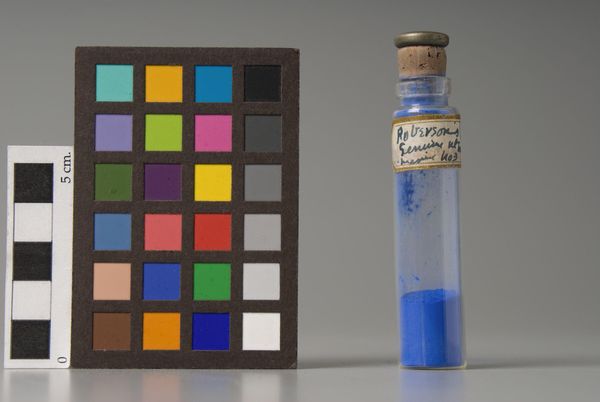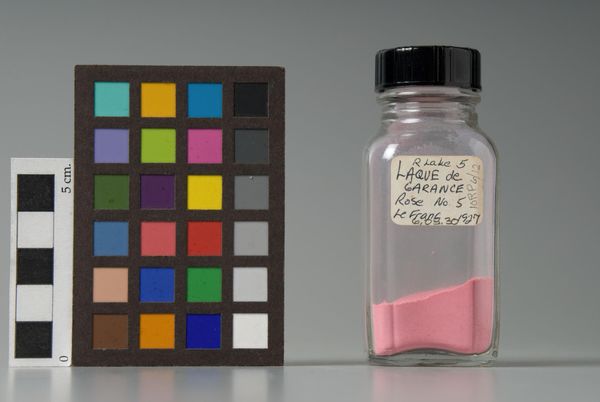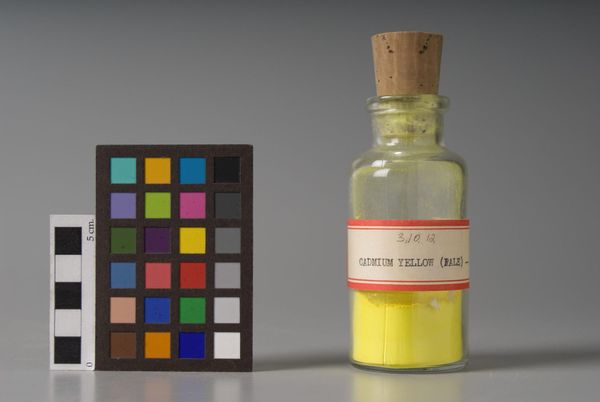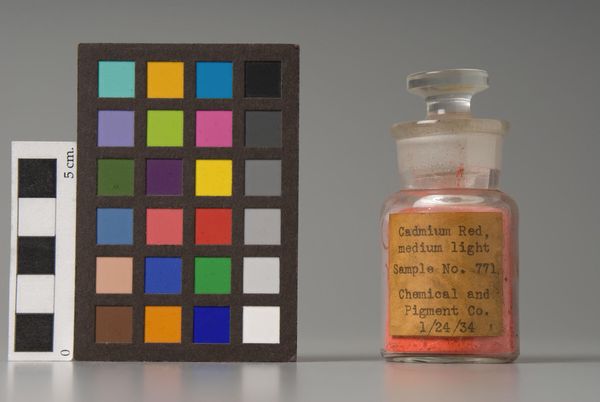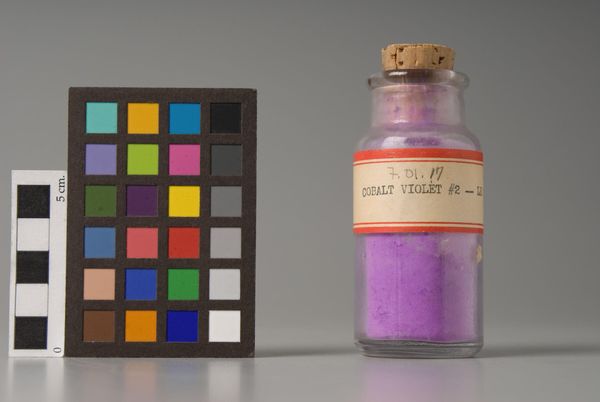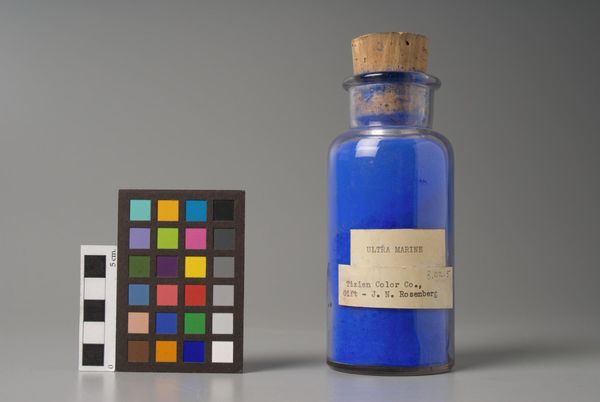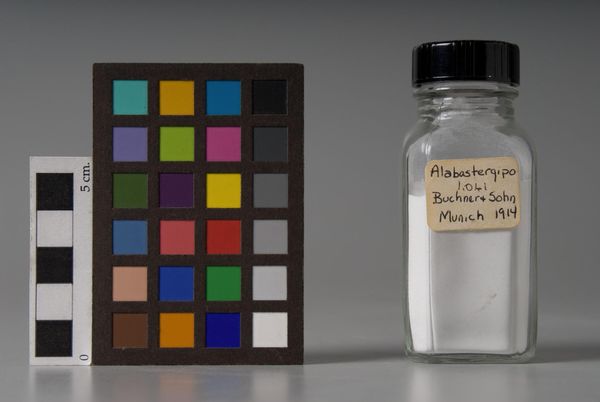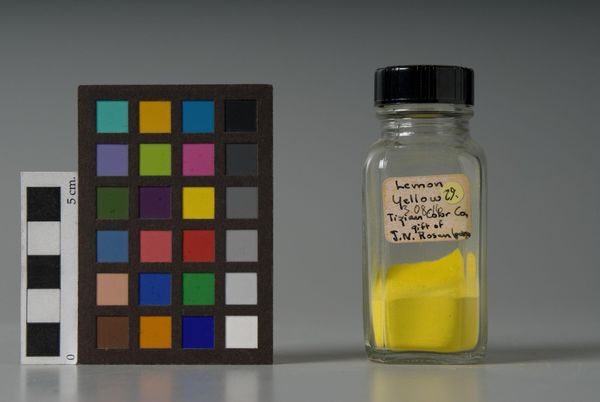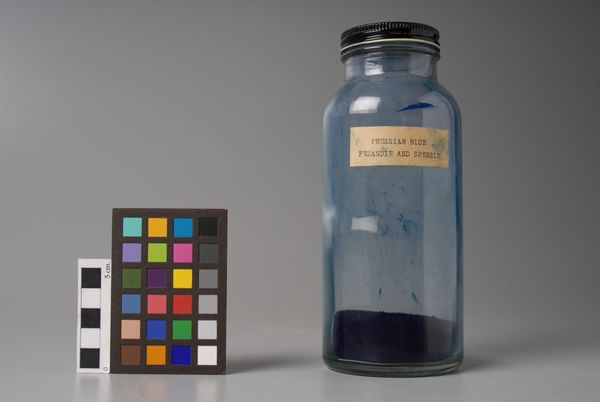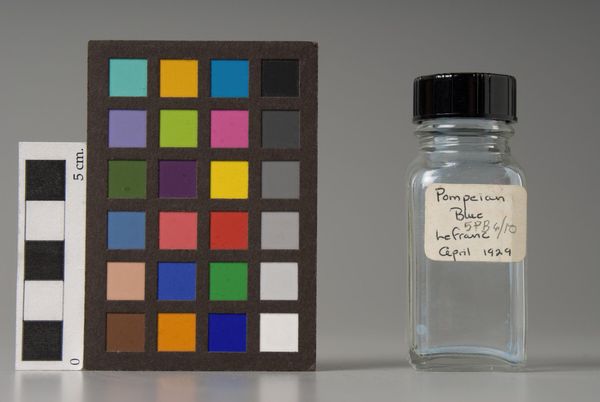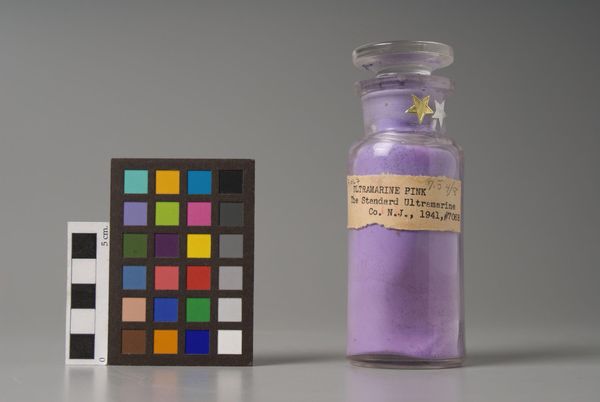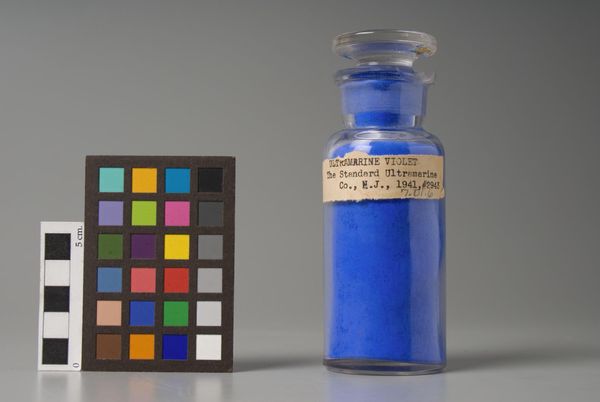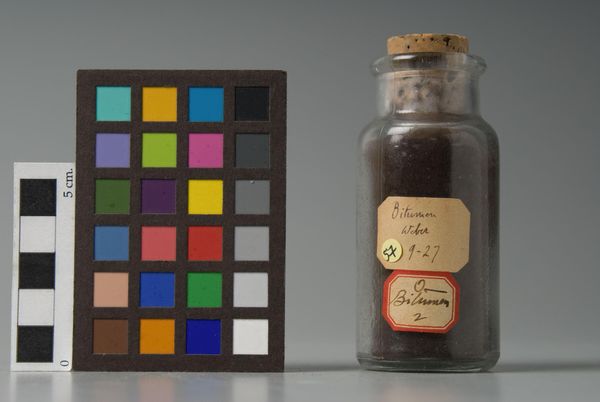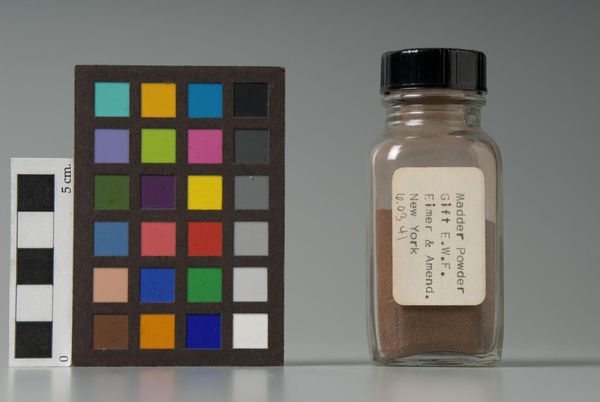
Copyright: CC0 1.0
Editor: This is "Genuine Ultramarine," from Charles Roberson and Co., a jar of pigment. It's fascinating to see raw materials displayed like this. What can we learn from looking at the pigment itself, divorced from a finished artwork? Curator: It compels us to consider the means of production. Ultramarine, traditionally derived from lapis lazuli, was once more valuable than gold, impacting artistic choices based on cost. How might access to this "Genuine Ultramarine" affect artistic creation and consumption? Editor: So, the ready availability changed how artists worked? Curator: Precisely! It democratizes color, impacting styles and trends. The materiality of "Genuine Ultramarine" reveals a shift in artistic labor and the evolving relationship between artists, suppliers, and the art market. Editor: I never thought about pigment this way. Curator: The display itself reframes our understanding of art. We often overlook the industrial and material processes underpinning art history. Examining the pigment underscores its inherent value. Editor: It gives me a whole new appreciation for the choices artists make.
Comments
No comments
Be the first to comment and join the conversation on the ultimate creative platform.
